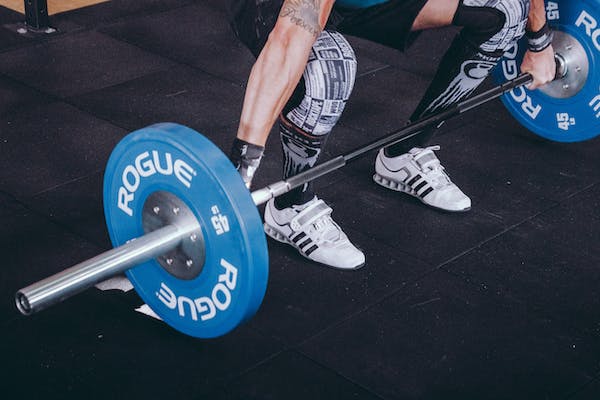
How to Design an Effective Full-Body Workout Routine
An effective full-body workout routine is a powerful tool that can help you achieve a balanced, strong, and functional physique. Whether you are a beginner looking to establish a solid foundation or an experienced gym-goer seeking a comprehensive workout plan, designing an efficient full-body routine is crucial for maximizing results and optimizing your time at the gym. In this guide, we will take you through a step-by-step process to create an effective full-body workout routine that targets all major muscle groups while promoting overall strength and fitness.
Step 1: Assess Your Fitness Level and Set Goals
Before diving into crafting your full-body workout routine, take some time to assess your current fitness level and set clear and achievable goals. Understand your strengths, weaknesses, and any limitations you may have. Setting specific and realistic objectives will help you stay focused and motivated throughout your journey.
Step 2: Determine Workout Frequency
The frequency of your full-body workouts will largely depend on your training experience, recovery capacity, and overall schedule. For beginners, starting with two to three full-body workouts per week is recommended. As you progress and become more conditioned, you can increase the frequency to three to four sessions per week. Ensure you have at least one rest day between each full-body workout to allow your muscles ample time to recover.
Step 3: Choose the Right Exercises
When designing a full-body workout routine, it's essential to select exercises that target all major muscle groups effectively. Incorporating compound movements, which engage multiple muscle groups simultaneously, should be the foundation of your routine. Some excellent compound exercises include:
Squats: Targeting the quadriceps, hamstrings, glutes, and core.
Deadlifts: Engaging the hamstrings, glutes, lower back, and forearms.
Bench Press: Working the chest, shoulders, and triceps.
Pull-Ups/Chin-Ups: Targeting the back, biceps, and shoulders.
Overhead Press: Engaging the shoulders, triceps, and upper back.
Additionally, include isolation exercises to target specific muscles and improve muscle balance. Examples of isolation exercises include bicep curls, tricep extensions, calf raises, and lateral raises.
Step 4: Structure Your Workout Routine
An effective full-body workout routine should be well-structured to ensure all muscle groups receive adequate attention. There are several ways to structure your routine:
Option 1: Alternate between Upper and Lower Body
Day 1:
- Squats
- Bench Press
- Bent-Over Rows
- Leg Press
- Overhead Press
- Bicep Curls
- Tricep Dips
Day 2:
- Deadlifts
- Pull-Ups/Chin-Ups
- Lunges
- Dumbbell Shoulder Press
- Leg Curls
- Lateral Raises
- Calf Raises
Option 2: Push-Pull Format
Day 1 (Push):
- Bench Press
- Overhead Press
- Tricep Dips
- Leg Press
- Leg Extensions
- Calf Raises
Day 2 (Pull):
- Deadlifts
- Pull-Ups/Chin-Ups
- Bent-Over Rows
- Bicep Curls
- Seated Rows
- Face Pulls
Step 5: Set Reps and Sets
The number of repetitions and sets will depend on your goals and fitness level. For strength and muscle building, aim for 3-5 sets of 6-12 repetitions per exercise. If your goal is endurance and toning, increase the repetitions to 12-20 per set. Remember to adjust the weight accordingly, ensuring that the last few repetitions of each set are challenging but manageable with proper form.
Step 6: Plan Your Rest Periods
Rest periods are essential for recovery and optimal performance during your full-body workouts. Aim for 1-2 minutes of rest between sets, allowing your muscles to recover while maintaining intensity throughout the workout. Shorter rest periods can increase the intensity and calorie burn, while longer rest periods favor strength gains.
Step 7: Warm-Up and Cool-Down
Never skip the warm-up and cool-down portions of your full-body workout routine. Warming up prepares your muscles and joints for the upcoming exercises, reducing the risk of injury. A dynamic warm-up that includes movements like leg swings, arm circles, and bodyweight squats is ideal. After your workout, cool down with static stretches, holding each stretch for 15-30 seconds to improve flexibility and reduce muscle tension.
Step 8: Monitor Progress and Make Adjustments
Consistently track your progress by recording the weights lifted, repetitions performed, and how you feel during and after each workout. Regularly reassess your fitness goals and adjust your full-body workout routine accordingly. As you become more experienced and stronger, consider increasing the resistance, altering exercise variations, or adjusting the frequency to keep challenging your body and prevent plateaus.
Takeaways
Designing an effective full-body workout routine requires careful planning, dedication, and a willingness to adapt as you progress. By assessing your fitness level, setting clear goals, incorporating compound and isolation exercises, structuring your workouts strategically, and monitoring your progress, you can create a balanced and efficient full-body routine that promotes strength, muscle development, and overall fitness. Remember to always prioritize proper form and listen to your body's signals to prevent injuries and ensure steady progress on your fitness journey. So, take these steps to heart, and let your full-body workout routine become the foundation for a stronger, healthier, and more confident you.









